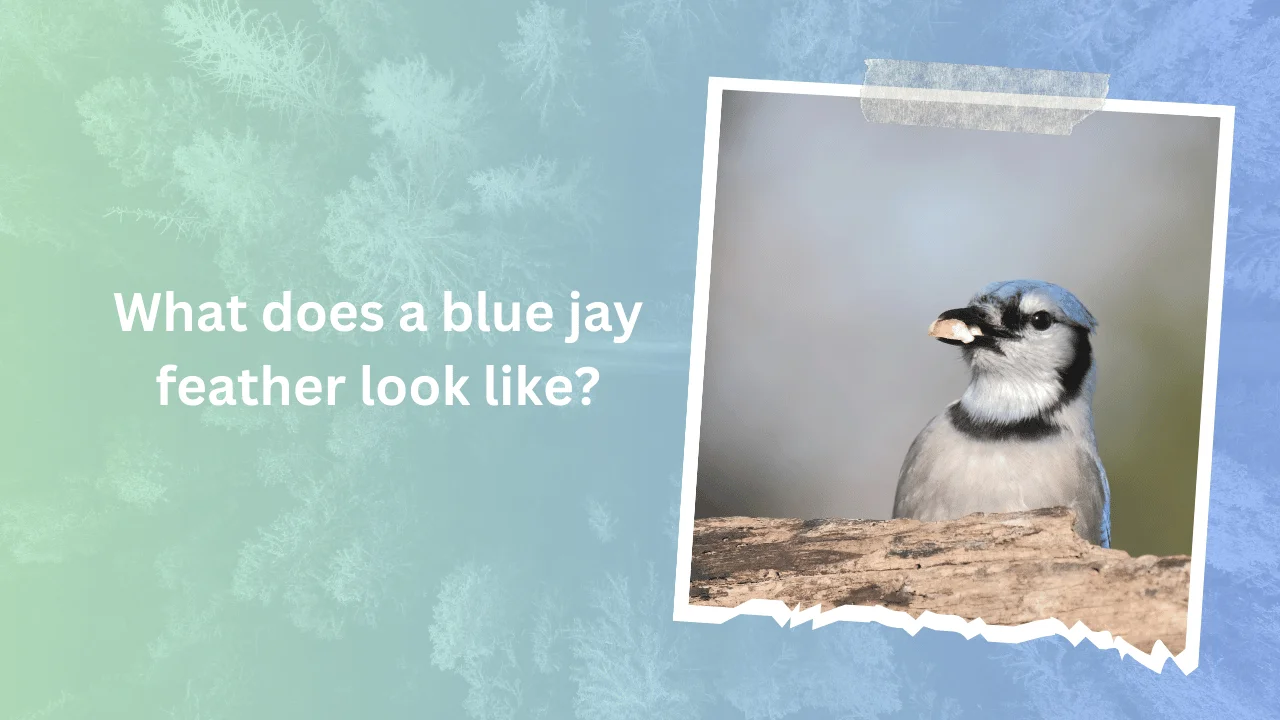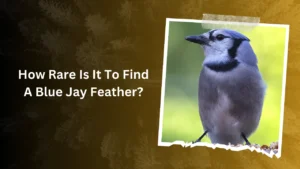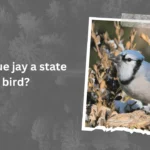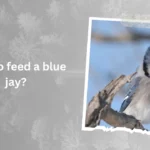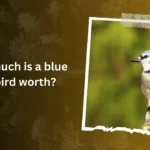The beauty of nature often reveals itself in the smallest details, and one of the most striking examples is found in the feathers of the blue jay.
Did you know that blue jay feathers are not actually blue? Instead, their vivid color arises from a unique structure that refracts light, creating the brilliant hues we admire. This captivating phenomenon not only highlights the wonders of avian adaptation but also invites us to explore the intricate world of bird feathers.
The story of the blue jay’s feather is a testament to the remarkable ways in which nature engineers beauty and functionality.
In addition to their stunning appearance, blue jay feathers serve crucial roles in the birds’ survival and communication. The striking blue coloration acts as a form of camouflage among the leafy treetops, while the distinctive patterns and markings enable blue jays to convey important signals to one another.
From attracting mates to establishing territory, these feathers are more than mere decorations; they are vital tools that enhance the blue jay’s ability to thrive in its environment. Understanding the significance of these feathers allows us to appreciate the deeper connection between form and function in the natural world.
As we delve into the details of what blue jay feathers look like, we’ll uncover the various shades, patterns, and textures that make them so unique. We’ll explore how these features not only contribute to the birds’ stunning aesthetics but also play critical roles in their behavior and interactions.
Join us on this colorful journey as we celebrate the marvels of blue jay feathers and gain a greater appreciation for the wonders of the avian world.
Contents
The Basics of Blue Jay Feathers
Understanding the structure of blue jay feathers begins with their basic components, which play crucial roles in their functionality. Each feather consists of a rachis, the central shaft that supports the entire feather, branching out into barbs that create a flat surface known as the vane.
Each barb further divides into tiny structures called barbules, which interlock to provide the feather with its shape and integrity. This intricate design not only allows for flexibility and strength but also contributes to the feather’s ability to trap air, aiding in flight and insulation.
The stunning coloration of blue jay feathers is primarily due to the presence of pigments and structural coloration. While many birds rely on pigments like melanin (responsible for browns and blacks) and carotenoids (which produce reds and yellows), blue jays exhibit a unique structural coloration.
Their blue feathers derive from the microscopic structure that refracts light, creating the vibrant hues we see. This optical illusion means that the actual pigment is not blue; instead, it’s the arrangement of the feather layers that gives the blue jay its striking appearance.
Blue jays possess various types of feathers, each serving distinct functions. Flight feathers, located on the wings and tail, are long and sturdy, allowing for powerful flight and agility.
Contour feathers, which cover the body, help streamline the bird’s shape and provide insulation. Lastly, the soft and fluffy down feathers trap air and provide warmth, essential for temperature regulation. Together, these feather types work harmoniously, ensuring that blue jays not only look beautiful but also thrive in their habitats.
The Blue Jay’s Color Palette
The blue jay’s iridescent blue plumage is one of the most captivating features of this bird, and its striking color is the result of complex mechanisms involving light scattering and interference. Unlike pigments that provide color through chemical properties, the blue in blue jay feathers arises from their microscopic structure.
When light hits the feather, it scatters in such a way that the wavelengths associated with blue light are enhanced, creating the vibrant appearance we see. This phenomenon not only showcases nature’s brilliance but also highlights the fascinating science behind avian coloration.
In addition to their stunning blue hue, blue jays exhibit prominent black and white markings that serve vital roles in both camouflage and communication. The black markings around their face and throat help break up their outline against the varied backgrounds of their forest habitats, making it easier for them to blend in and evade predators.
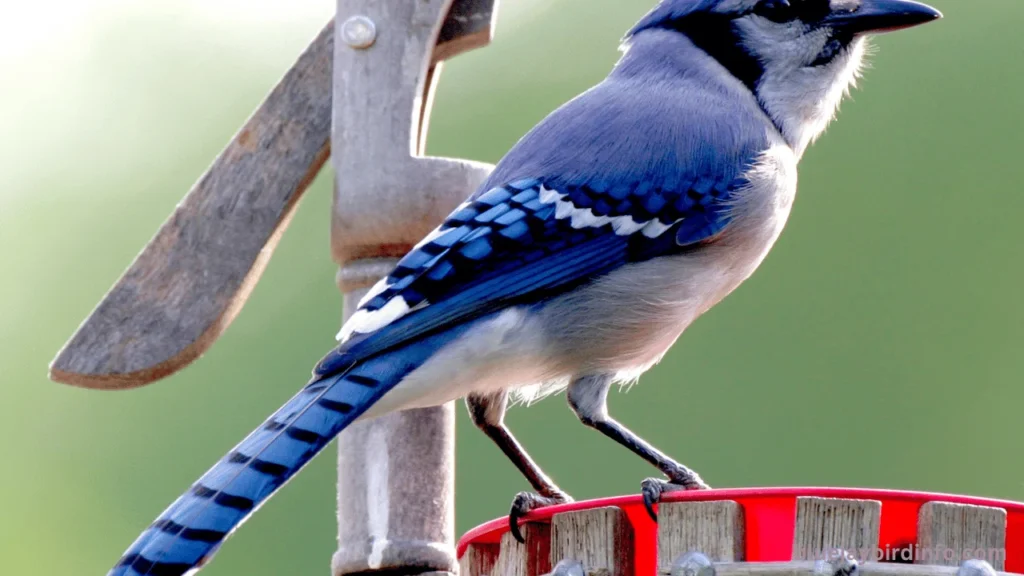
Meanwhile, the stark contrast of these markings can also signal aggression or dominance to other blue jays, playing a crucial part in their social interactions. These bold patterns are an essential aspect of their overall appearance, enhancing both their survival and social dynamics.
As the seasons change, blue jay feather coloration may also exhibit seasonal variations due to processes such as molting. During molting, blue jays replace old feathers with new ones, which can result in subtle differences in color saturation and brightness. Factors like weather conditions and availability of nutrients can also impact feather quality.
Observing these variations not only adds to our appreciation of these beautiful birds but also underscores the intricate relationship between environment and biology in the avian world. Overall, the blue jay’s color palette is a mesmerizing blend of science, nature, and survival, showcasing the remarkable adaptations of these intelligent birds.
Feather Patterns and Functions
The distinctive eye stripe of the blue jay is more than just a striking feature; it plays a significant role in predator deterrence and social interactions. This bold black stripe that runs from the beak through the eye creates a striking contrast against the blue plumage, which can confuse potential predators by disrupting the bird’s outline.
Additionally, the eye stripe serves as a visual cue during social interactions, helping blue jays communicate their mood and intentions to others in their flock. This intricate pattern not only enhances the bird’s survival chances but also contributes to its dynamic social behavior.
Wing bars are another notable feature of blue jay feathers that serve multiple purposes. These white markings located on the wings are not just for decoration; they aid in flight stability and help the bird maintain control during its aerial maneuvers.
The wing bars act like visual indicators, allowing blue jays to communicate with one another while in flight, especially during social interactions or while navigating through dense foliage. This functionality is crucial, as it ensures that they can coordinate effectively while foraging or evading predators.
Blue jay tail feathers are equally fascinating, as they are vital for the bird’s flight, steering, and even courtship displays. The structure of the tail feathers allows for precise control during flight, enabling blue jays to make sharp turns and rapid descents.
During mating season, these tail feathers are also used in courtship displays, showcasing the male’s health and vitality to potential mates. The vibrant colors and patterns of the tail feathers enhance these displays, making them a key component of blue jay behavior.
Overall, the patterns and functions of blue jay feathers illustrate the intricate adaptations that allow these birds to thrive in their environments while navigating social complexities.
Feather Care and Maintenance
Molting is a natural process that blue jays undergo to maintain the quality of their feathers. During this time, they shed old feathers and replace them with new ones, typically occurring once a year.
This process is crucial, as worn or damaged feathers can impair a bird’s ability to fly and thermoregulate. Molting can take several weeks, during which blue jays may appear scruffy and less colorful as they transition to their fresh plumage.
Proper molting ensures that these birds have optimal feathers for flight and insulation, allowing them to thrive in their environments.
Preening is another essential behavior that blue jays engage in to maintain the health of their feathers. By using their beaks, blue jays carefully align and clean their feathers, removing dirt, debris, and parasites that could harm their feather structure.
This grooming behavior is vital for keeping the feather vanes intact and ensuring that the feathers remain waterproof and effective for flight. Preening also distributes natural oils produced by the birds, which help maintain the feathers’ flexibility and durability. Without regular preening, blue jays risk compromising their feather health and overall well-being.
When it comes to feather damage, blue jays possess remarkable adaptations that allow them to cope with and repair their feathers. While they cannot regenerate feathers on their own, they can manage minor damage by carefully preening and realigning any dislodged barbules.
However, significant feather damage can impact a blue jay’s ability to fly, escape predators, and find food, ultimately affecting its survival. In such cases, a blue jay may become more vulnerable, as compromised feathers can lead to reduced mobility and difficulties in maintaining body temperature.
Therefore, regular feather care and maintenance are critical for the health and survival of these beautiful birds, allowing them to navigate their environments successfully.
Feathers and Communication
Blue jays employ their feathers as a vital tool for courtship displays, showcasing their vibrant plumage to attract potential mates. During the mating season, males perform elaborate rituals that include puffing out their feathers, fanning their tails, and executing aerial acrobatics to demonstrate their health and vitality.
The striking coloration of their feathers plays a crucial role in these displays, as brighter and more vibrant plumage is often associated with stronger genetics, making them more appealing to female blue jays. These courtship displays are not only about physical appearance but also about signaling their fitness as a mate.
In addition to courtship, feathers are instrumental in territorial defense among blue jays. During disputes over territory, blue jays will often raise their feathers to appear larger and more intimidating. The way they position their feathers can signal aggression and establish dominance over intruders.
A blue jay’s feather posture and movements can convey clear messages about their intent, helping to deter rival birds and protect their claimed areas. The intensity of these displays, often accompanied by vocalizations, underscores the importance of feathers in maintaining social order within their habitats.
Feathers also play a significant role in social signaling among blue jay flocks. The coloration and patterns of their feathers can communicate important information about an individual’s social status or identity within the group. For instance, certain markings may help blue jays recognize each other, facilitating cohesive flock behavior.
In social interactions, more dominant birds may display their brighter plumage to assert their status, while more subordinate birds might use more subdued feather displays to avoid confrontation.
This complex interplay of feather communication highlights the essential role that plumage plays in the social dynamics of blue jay populations, illustrating how these beautiful birds navigate their relationships through their vibrant and varied feathers.

Conclusion
In conclusion, blue jay feathers are not merely decorative; they serve a multitude of crucial functions that contribute to the survival and social dynamics of these fascinating birds. From the intricate structure of their feathers to the stunning coloration that plays a role in both courtship and territorial defense, blue jays utilize their plumage in complex ways.
The maintenance of their feathers, including the processes of molting and preening, ensures their functionality and health, allowing blue jays to thrive in their environments.
Furthermore, the way blue jays use their feathers for communication—whether to attract mates, assert dominance, or identify themselves within a flock—illustrates the essential role that these beautiful structures play in their daily lives.
Ultimately, the intricate world of blue jay feathers reveals the evolutionary adaptations that enhance their survival while also enriching our understanding of avian behavior.
As we appreciate the beauty and complexity of blue jays, we are reminded of the interconnectedness of nature, where even the smallest details, such as feathers, can have profound implications for life in the wild.
By fostering a deeper appreciation for these remarkable birds and their unique adaptations, we can contribute to their conservation and ensure that future generations can also marvel at the wonders of the natural world.
Also, read other articles related to Blue Jay Habits!
FAQ’s
What colors are blue jay feathers?
Blue jay feathers are primarily a vibrant blue, with black and white markings. The blue color is not due to pigments but rather the way light interacts with the feather structure.
How do blue jays care for their feathers?
Blue jays maintain their feathers through preening, which helps remove dirt and parasites, and they undergo a process called molting to replace old feathers with new ones.
What is the purpose of the blue jay’s eye stripe?
The eye stripe serves to confuse predators by disrupting the bird’s outline and also aids in social communication among blue jays.
Do blue jays have different types of feathers?
Yes, blue jays have several types of feathers, including flight feathers, contour feathers, and down feathers, each serving different functions.
How do blue jays use their feathers in courtship?
During courtship displays, male blue jays fluff their feathers and perform aerial displays to showcase their fitness and attract female mates.
Can blue jays repair damaged feathers?
While blue jays cannot regenerate feathers, they can preen and realign damaged ones to maintain their effectiveness, but significant damage can affect their ability to fly.

